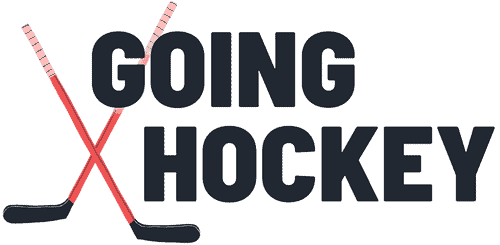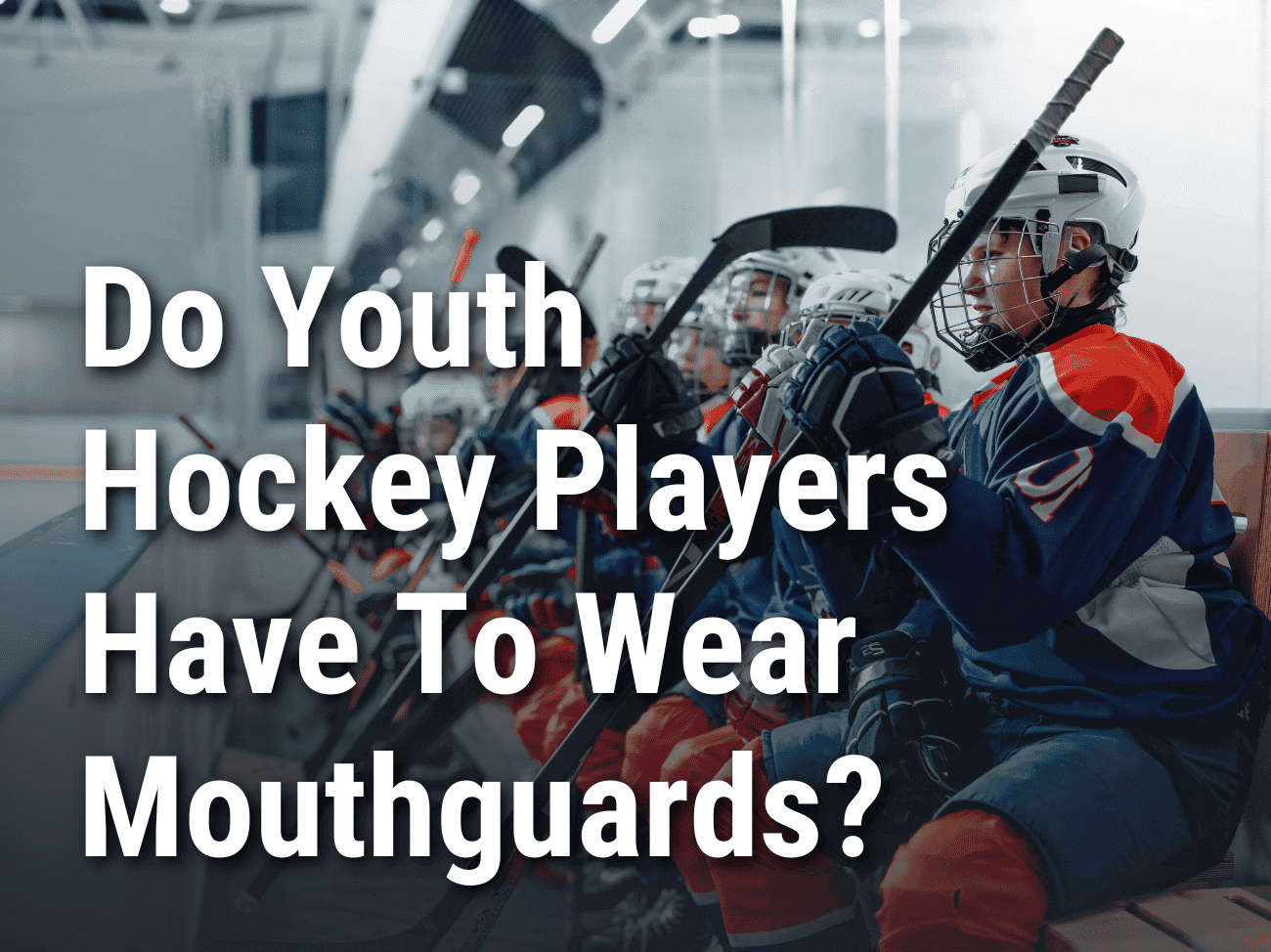In the realm of youth hockey, the question of whether to mandate the use of mouthguards among players has sparked a spirited discourse, highlighting the balance between safety and potential performance impacts.
Do youth hockey players have to wear mouthguards?
- USA Hockey: Peewee (12U), bantam (14U), and midget (18U & Girls 19U) hockey players are required to wear mouthguards, regardless of whether there is hitting or not.
- Hockey Canada: Mouthguards are not required. However, local hockey leagues and organizations can make mouthguards if they choose to do so.

Do Youth Hockey Players Have To Wear Mouthguards?
Yes, and no. It depends on the league.
The implementation of mouthguard mandates in youth hockey varies significantly based on the governing bodies that oversee the sport within different regions, such as USA Hockey and Hockey Canada.
These organizations, while sharing the common goal of promoting player safety, have adopted distinct approaches to the use of mouthguards, reflecting the nuanced considerations of player protection, sport integrity, and practicality.

USA Hockey – Do Youth Hockey Players Have To Wear Mouthguards?
“All players, including goalkeepers, in the 12 & under (Youth and Girls’) through Youth 18 & under (including High School) and Girls’ 19 & under age classifications are required to wear a colored (non-clear) internal mouthpiece…”
This rule applies to all players, including goalkeepers. While it’s advised for players in all age groups to wear a mouthguard fitted by a dentist, it’s especially important for those in the specified age categories. This rule aims to ensure players’ dental safety and reduce the risk of injuries to their teeth and jaw.

Hockey Canada – Do Youth Hockey Players Have To Wear Mouthguards?
“For divisions of hockey that allow the wearing of the half visor, the wearing of a mouth guard is compulsory (recommended but optional for Senior hockey)…”
This rule ensures that players protect their teeth and mouth. If a player doesn’t wear a mouthguard correctly during the game, their team gets a warning. If any player on that team breaks the rule again, they’ll get a Misconduct penalty.
Referees will let the coach know about the warning, aiming to keep players safe and in line with the rule. For senior hockey, wearing a mouthguard is recommended but not required.

Does A Mouthguard Protect Teeth In Hockey?
Hockey mouthguards help to protect teeth in hockey.
Hockey is a high-impact sport where players can experience collisions, falls, and direct impacts from pucks, sticks, and even other players. These scenarios can lead to dental injuries such as chipped, broken, or knocked-out teeth, as well as injuries to the lips, cheeks, and tongue.
A mouthguard, when properly fitted and worn, serves as a crucial protective barrier against these potential injuries.
Here’s how a mouthguard works to provide protection:
- Shock Absorption
- A mouthguard is typically made from a pliable material, often thermoplastic or rubber-like, that can absorb and distribute the forces generated by impacts. When a player takes a hit to the face, the mouthguard acts as a cushion, absorbing a significant portion of the impact force. This helps to reduce the intensity of the blow that would otherwise directly affect the teeth and surrounding tissues.
- Dispersing Pressure
- The material used in mouthguards is designed to disperse the pressure of an impact over a larger area. By spreading out the force, the mouthguard helps prevent a concentrated impact from causing damage to a specific tooth or area.
- Preventing Tooth-to-Tooth Contact
- A well-fitted mouthguard creates a protective barrier between the upper and lower teeth. This prevents the teeth from colliding with each other during a sudden impact, which could otherwise lead to chipped, cracked, or broken teeth.
- Reducing Risk of Soft Tissue Injuries
- In addition to protecting teeth, a mouthguard also helps prevent injuries to the soft tissues inside the mouth. By creating a cushioned layer between the teeth and the lips, cheeks, and tongue, it reduces the likelihood of cuts, bruises, and lacerations during collisions or falls.
It’s important to note that a proper fit is crucial for the effectiveness of a mouthguard. An ill-fitting mouthguard might not provide adequate protection and could even cause discomfort or difficulty in breathing and speaking.
Overall, a mouthguard serves as a vital piece of protective equipment in hockey and similar physical sports. By absorbing impact forces, dispersing pressure, and preventing direct tooth-to-tooth contact, a properly fitted mouthguard significantly reduces the risk of dental injuries and contributes to the overall safety and well-being of athletes on the ice.

Is Body Checking Allowed In Youth Hockey?
In most cases, body checking is not allowed until Bantams (13 & up). However, it largely depends on the age, league, and level of hockey being played.
Much like the varying rules surrounding mouthguard usage in youth hockey, regulations regarding hitting also demonstrate marked differences between different governing bodies, with USA Hockey and Hockey Canada offering contrasting approaches.
These divergent strategies reflect the nuanced considerations of player safety, skill development, and the overall experience within the context of the sport.
USA Hockey – Is Body Checking Allowed In Youth Hockey?
In USA Hockey, there are rules about body checking in different age groups. For players who are 12 years old and younger, body checking is not allowed. This also applies to girls’ and women’s age groups, as well as adult leagues where checking is not part of the game.
“Body checking is prohibited in the 12 & under youth age classifications and below, all Girls’/Women’s age classifications and all non-check Adult classifications…”
These rules are in place to prioritize safety and skill development in these categories of play. This means that players in these groups can focus more on improving their skating, passing, and teamwork without the added physical contact of body checking. It’s about creating a safer and more balanced playing experience for everyone involved.
Hockey Canada – Is Body Checking Allowed In Youth Hockey?
In Hockey Canada, there’s a rule about body checking. If a player intentionally body-checks, bumps, shoves, or pushes another player, they’ll get a Minor penalty. This applies to players who are 13 years old and younger, female hockey, and other divisions approved by Hockey Canada.
“A Minor penalty will be assessed to any player who, in the opinion of the Referee, intentionally body-checks, bumps, shoves, or pushes any opposing player, in divisions of U13 and below, female hockey, and any other divisions approved by a Member of Hockey Canada.”
The rule aims to make sure that younger players and female players can focus on playing without as much physical contact, promoting a safer and more skill-focused environment on the ice. It’s about maintaining a balanced and safe experience for players in these categories.

Do Mouthguards Prevent Concussions?
Mouthguards do not prevent concussions.
While they offer protection for teeth and oral tissues, they do not have a significant impact on preventing or reducing the risk of concussions.
Concussions are primarily caused by the brain moving within the skull due to a sudden impact or force to the head or body.
Mouthguards are not capable of absorbing or redirecting the forces that lead to concussions, as they are focused on protecting the teeth and soft tissues within the mouth.
It’s important for athletes to use appropriate protective gear and follow proper techniques to reduce the risk of concussions, but relying solely on a mouthguard for concussion prevention is not effective.


Leave a Reply